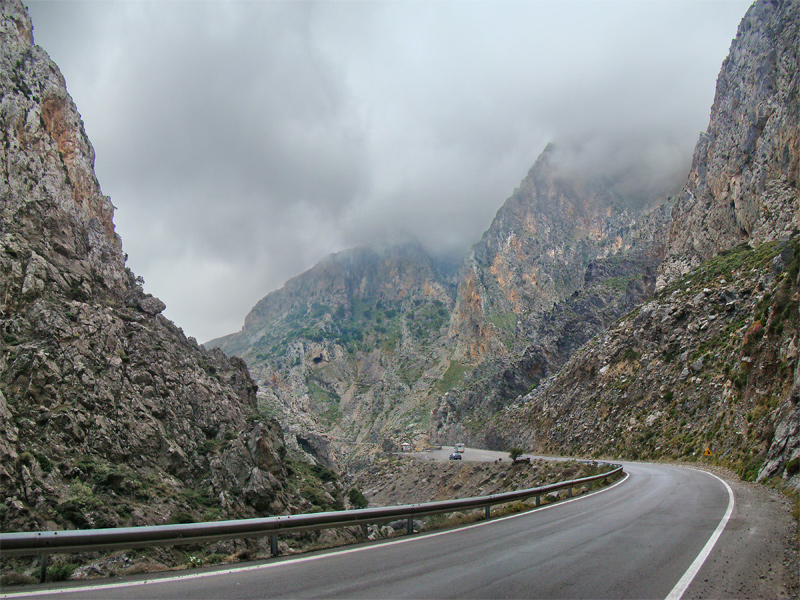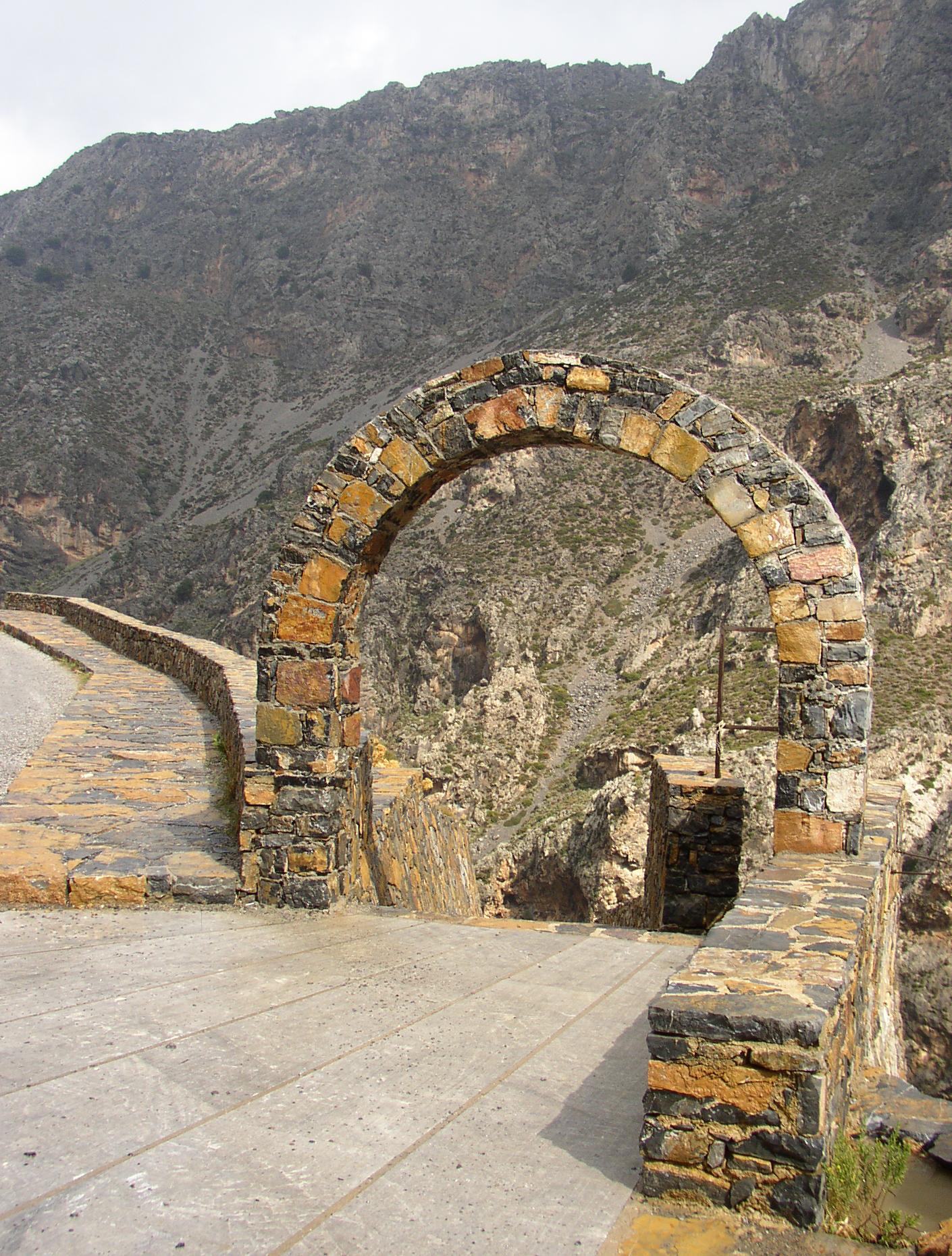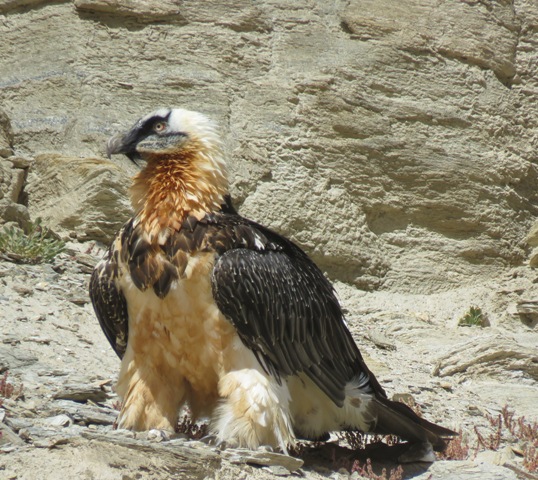|
Kourtaliotiko Gorge
The Kourtaliotiko Gorge ( el, Κουρταλιώτικο Φαράγγι), also known as the Asomatos Gorge ( el, Φαράγγι Ασώματου), is a gorge on the southern side of the western part of the island of Crete. It is situated where the Kourtaliotiko River flows southwards between the mountains of Kouroupa and Xiron. The village of Koxare is at the northern end of the gorge. A road runs north to south through the gorge connecting Koxare to Asomatos; it then leads west, to the town of Plakias on the southern coast of Crete. There is a small church (Agios Nikolaos) in the gorge and a 40-metre-high waterfall. The cliffs on the side of the gorge provide a roosting site for the Lammergeier vulture. There is a specific point on the gorge, about 20 metres from the northern entrance, some "claps" can be heard, like hands coming together. These "claps" are the "kourtala", that give the name ''ο Κουρταλιώτης ( o Kourtaliotis , "the rattle" and "the noisy")'' to ... [...More Info...] [...Related Items...] OR: [Wikipedia] [Google] [Baidu] |
Crete Kourtaliotiko1 Tango7174
Crete ( el, Κρήτη, translit=, Modern: , Ancient: ) is the largest and most populous of the Greek islands, the 88th largest island in the world and the fifth largest island in the Mediterranean Sea, after Sicily, Sardinia, Cyprus, and Corsica. Crete rests about south of the Greek mainland, and about southwest of Anatolia. Crete has an area of and a coastline of 1,046 km (650 mi). It bounds the southern border of the Aegean Sea, with the Sea of Crete (or North Cretan Sea) to the north and the Libyan Sea (or South Cretan Sea) to the south. Crete and a number of islands and islets that surround it constitute the Region of Crete ( el, Περιφέρεια Κρήτης, links=no), which is the southernmost of the 13 top-level administrative units of Greece, and the fifth most populous of Greece's regions. Its capital and largest city is Heraklion, on the north shore of the island. , the region had a population of 636,504. The Dodecanese are located to the nort ... [...More Info...] [...Related Items...] OR: [Wikipedia] [Google] [Baidu] |
Gorge
A canyon (from ; archaic British English spelling: ''cañon''), or gorge, is a deep cleft between escarpments or cliffs resulting from weathering and the erosion, erosive activity of a river over geologic time scales. Rivers have a natural tendency to cut through underlying surfaces, eventually wearing away rock layers as sediments are removed downstream. A river bed will gradually reach a baseline elevation, which is the same elevation as the body of water into which the river drains. The processes of weathering and erosion will form canyons when the river's River source, headwaters and estuary are at significantly different elevations, particularly through regions where softer rock layers are intermingled with harder layers more resistant to weathering. A canyon may also refer to a rift between two mountain peaks, such as those in ranges including the Rocky Mountains, the Alps, the Himalayas or the Andes. Usually, a river or stream carves out such splits between mountains. Examp ... [...More Info...] [...Related Items...] OR: [Wikipedia] [Google] [Baidu] |
Crete
Crete ( el, Κρήτη, translit=, Modern: , Ancient: ) is the largest and most populous of the Greek islands, the 88th largest island in the world and the fifth largest island in the Mediterranean Sea, after Sicily, Sardinia, Cyprus, and Corsica. Crete rests about south of the Greek mainland, and about southwest of Anatolia. Crete has an area of and a coastline of 1,046 km (650 mi). It bounds the southern border of the Aegean Sea, with the Sea of Crete (or North Cretan Sea) to the north and the Libyan Sea (or South Cretan Sea) to the south. Crete and a number of islands and islets that surround it constitute the Region of Crete ( el, Περιφέρεια Κρήτης, links=no), which is the southernmost of the 13 top-level administrative units of Greece, and the fifth most populous of Greece's regions. Its capital and largest city is Heraklion, on the north shore of the island. , the region had a population of 636,504. The Dodecanese are located to the no ... [...More Info...] [...Related Items...] OR: [Wikipedia] [Google] [Baidu] |
Kouroupa
Kouroupa ( el, Κουρούπα) is a mountain in western Crete. Its summit is 984 metres above sea level. To the east of the mountain lies Kourtaliotiko Gorge. The summit, its telecoms masts and chapel are accessed by an unsurfaced road up from Atsipades Atsipades (Greek: Ατσιπάδες,) is an archaeological site of a Minoan peak sanctuary in western Crete. It is an open-air peak sanctuary, situated on a mountain and open to the elements. It was discovered by K. Nowicki in 1985. Location At ... village on the northern side of the mountain. On the southern side of the mountain are the villages of Asomatos and Mirthios. Mountains of Crete Landforms of Rethymno (regional unit) {{Crete-geo-stub ... [...More Info...] [...Related Items...] OR: [Wikipedia] [Google] [Baidu] |
Kourtaliotiko Bogen
The Kourtaliotiko Gorge ( el, Κουρταλιώτικο Φαράγγι), also known as the Asomatos Gorge ( el, Φαράγγι Ασώματου), is a gorge on the southern side of the western part of the island of Crete. It is situated where the Kourtaliotiko River flows southwards between the mountains of Kouroupa and Xiron. The village of Koxare is at the northern end of the gorge. A road runs north to south through the gorge connecting Koxare to Asomatos; it then leads west, to the town of Plakias on the southern coast of Crete. There is a small church (Agios Nikolaos) in the gorge and a 40-metre-high waterfall. The cliffs on the side of the gorge provide a roosting site for the Lammergeier vulture. There is a specific point on the gorge, about 20 metres from the northern entrance, some "claps" can be heard, like hands coming together. These "claps" are the "kourtala", that give the name ''ο Κουρταλιώτης ( o Kourtaliotis , "the rattle" and "the noisy")'' to ... [...More Info...] [...Related Items...] OR: [Wikipedia] [Google] [Baidu] |
Plakias
Plakias () is a village on the south coast of the Greek island of Crete, in the Rethymno regional unit, about 21 kilometres south of the city of Rethymno. It is part of the municipality Agios Vasileios, and of the municipal unit Foinikas. It is surrounded by mountains to the north and the Libyan Sea to the south. The name in Greek means "flat", because the town stands on an alluvial fan of material that has washed down the Kotsifou gorge directly to the north. This material has formed along the sea's edge into a long, fine, gold-hued sand beach, which shelves very gradually out into the bay, making it quite safe for swimming and hence, for family holidays. Initially just a fishing jetty and a few houses, Plakias developed during the last few decades into a tourist resort. The first official mention of Plakias was in 1961, when it was recorded in a census as the permanent home of six fishermen. The recorded history of surrounding mountain villages like Myrthios and Sellia ... [...More Info...] [...Related Items...] OR: [Wikipedia] [Google] [Baidu] |
Lammergeier
The bearded vulture (''Gypaetus barbatus''), also known as the lammergeier and ossifrage, is a very large bird of prey and the only member of the genus ''Gypaetus''. Traditionally considered an Old World vulture, it actually forms a separate minor lineage of Accipitridae together with the Egyptian vulture (''Neophron percnopterus''), its closest living relative. It is not much more closely related to the Old World vultures proper than to, for example, hawks, and differs from the former by its feathered neck. Although dissimilar, the Egyptian and bearded vulture each have a lozenge-shaped tail—unusual among birds of prey. The bearded vulture population is thought to be in decline; in 2004, it was classified on the IUCN Red List as least concern but has been listed as near threatened since 2014. It lives and breeds on crags in high mountains in southern Europe, East Africa, the Indian subcontinent, Tibet, and the Caucasus. Females lay one or two eggs in mid-winter that hatch at ... [...More Info...] [...Related Items...] OR: [Wikipedia] [Google] [Baidu] |
Preveli
Preveli (Greek Πρέβελη) is a location on the south coast of the Greek island of Crete, in the Rethymno regional unit, notable for its monastery. Preveli Monastery The Holy Stavropegiac and Patriarchal Preveli Monastery of St. John the Theologian, known as the Monastery of Preveli, comprises two main building complexes, the ruined Lower Monastery of St. John the Baptist, and the currently operational Upper (Rear) Monastery of St. John the Theologian. The monastery was probably founded in the Middle Ages, during the occupation of Crete by the Republic of Venice, its founder being a feudal lord named Prevelis. It developed over several centuries as a religious and cultural centre for the local population. After the Ottoman Turkish occupation of the island, Abbot Melchissedek Tsouderos led a group of rebels in the Greek War of Independence in 1821, one result of which was that the monastery was destroyed, but later rebuilt. In 1866 and 1878, the monastery was again ac ... [...More Info...] [...Related Items...] OR: [Wikipedia] [Google] [Baidu] |
Phoenix Theophrasti
''Phoenix theophrasti'', the Cretan date palm, is a palm native to the eastern Mediterranean, with a very restricted distribution, confined to southern Greece, a few sites on Crete and nearby islands, as well as some places on the Turkish coast. In Europe, with ''Chamaerops humilis'' (European fan palm) are the unique native palm trees in continental Europe. In Turkey, it is the only native palm species; all the others—although much more common—were introduced. The specific epithet ''theophrasti'' was chosen by the Swiss botanist Werner Greuter in 1967 for the fact that Theophrastus, the ancient Greek "father of botany", had described several types of palms, including one from Crete. A genomic study from New York University Abu Dhabi Center for Genomics and Systems Biology showed that domesticated date palm varieties from North Africa, including well-known varieties such as Medjool and Deglet Noor, are a hybrid between Middle East date palms and P. theophrasti. Description ... [...More Info...] [...Related Items...] OR: [Wikipedia] [Google] [Baidu] |







